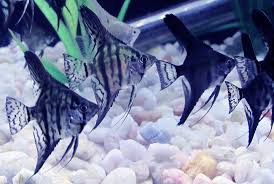The Symbolism of Dragons in Ancient Funeral Rituals

Dragons have long held a significant place in the mythology and spiritual practices of various cultures worldwide. These mythical creatures symbolize power, protection, and the eternal cycle of life and death, making them prominent figures in ancient funeral rituals. This article explores the role and symbolism of dragons in burial practices, their connection to beliefs about the afterlife, and how these traditions reflect the cultures that embraced them.
1. The Universal Symbolism of Dragons
Dragons as Guardians
In many cultures, dragons are seen as guardians of sacred spaces and treasures. Their inclusion in funeral rituals often symbolizes protection of the deceased and their passage to the afterlife.
- Eastern Traditions: In Chinese and Japanese cultures, dragons are revered as wise and benevolent creatures, protectors of the divine.
- Western Perspectives: In European mythology, dragons were often depicted as gatekeepers to otherworldly realms.
Dragons and the Cycle of Life
Dragons frequently represent the cyclical nature of existence—birth, death, and rebirth. This makes them fitting symbols for rituals that honor the dead while acknowledging the continuity of life.
2. Dragons in Ancient Chinese Funeral Practices
The Dragon and Yin-Yang Philosophy
In Chinese culture, dragons are associated with yang energy, representing vitality and the heavens. Paired with the yin of burial rituals, they symbolize harmony and balance, crucial concepts in guiding the soul to the afterlife.
Dragon Carvings in Tombs
- Designs and Placement: Dragons were often carved into the walls of tombs or depicted on sarcophagi to protect the deceased.
- The Role of Feng Shui: The placement of dragon motifs adhered to Feng Shui principles to ensure auspicious energy flow for the departed soul.
The Azure Dragon of the East
In Taoist traditions, the Azure Dragon (Qinglong), one of the Four Symbols of the Chinese constellations, is associated with protection and resurrection.
- Funeral Connection: The Azure Dragon was often invoked to guide the deceased toward the eastern realm of renewal.
3. Dragons in Japanese Burial Traditions
In Japanese mythology, dragons (ryū) are spiritual beings connected to water and the heavens. Their presence in burial rituals reflects a belief in purification and the soul’s journey.
Dragon-Decorated Urns and Coffins
- Ceramic Urns: Cremation urns in ancient Japan often bore dragon motifs to symbolize the soul’s ascent to the spiritual realm.
- Coffin Carvings: Wooden coffins were sometimes adorned with dragon designs to invoke protection and guidance.
The Dragon Gate Legend
The legend of the Dragon Gate, where a carp transforms into a dragon by swimming upstream, symbolizes perseverance and transformation—fitting metaphors for the soul’s journey after death.
4. Dragons in European Funeral Lore
Guardians of the Afterlife
In medieval European traditions, dragons were often seen as fierce protectors of sacred grounds and treasures, including burial sites.
- Celtic Mythology: Celtic cultures associated dragons with the earth’s energies, using their imagery to mark burial mounds.
- Nordic Legends: Dragons in Norse mythology guarded burial treasures, signifying the wealth and status of the deceased.
Dragons in Funeral Art
- Headstones and Effigies: Dragon motifs on headstones or effigies symbolized courage and the eternal protection of the deceased.
- The Dragon Slayer Archetype: Tales of dragon-slaying heroes, such as St. George, often paralleled themes of overcoming death and achieving spiritual triumph.
5. Dragons in Southeast Asian Burial Traditions
Naga: The Serpent-Dragon
In Southeast Asia, the naga, a serpent-like dragon, holds immense spiritual significance.
- Role in Funerals: The naga is believed to connect the earthly realm with the afterlife, serving as a guide for departed souls.
- Temple Imagery: Many ancient burial sites feature naga sculptures to invoke their blessings and protection.
Water Symbolism
The naga’s association with water emphasizes purification, a common theme in funeral rituals. Ceremonial water offerings were often made to honor the naga and ensure safe passage for the dead.
6. The Symbolism of Dragons in Mesoamerican Cultures
Quetzalcoatl: The Feathered Serpent
In Aztec and Mayan cultures, Quetzalcoatl, a feathered serpent dragon, was a deity associated with creation, life, and death.
- Burial Practices: Quetzalcoatl was invoked in funeral ceremonies to guide the deceased to the afterlife and ensure rebirth.
- Artifacts and Imagery: Dragon-like depictions of Quetzalcoatl were often included in burial goods to provide protection and spiritual connection.
Sacred Caves and Dragon Imagery
Caves, considered entrances to the underworld, were often adorned with dragon-like symbols, emphasizing their role as guardians of the deceased.
7. Dragons in African and Middle Eastern Burial Traditions
Egyptian Serpents and Dragons
While not explicitly dragons, serpent-like beings such as Apep in Egyptian mythology played roles in the afterlife journey.
- Symbolism: These beings represented chaos but were often overcome by the deceased’s soul, signifying triumph in the afterlife.
Guardians of Burial Sites
In certain African traditions, dragon-like creatures symbolized the guardianship of ancestors and the sacredness of burial grounds.
8. Modern Interpretations of Dragons in Funeral Symbolism
Revival of Ancient Practices
Dragon motifs have seen a resurgence in contemporary funeral art, blending traditional beliefs with modern aesthetics.
- Memorial Stones: Dragon carvings on gravestones symbolize strength, protection, and eternal life.
- Cremation Jewelry: Dragon-themed pendants and urns offer a way to honor the deceased with symbolic meaning.
Cultural Festivals Honoring the Dead
- Dragon Dances: In Chinese funerals, dragon dances may be performed to honor ancestors and guide spirits.
- Mythological Reenactments: Some cultures stage dragon-themed performances during memorial services to invoke blessings.
9. The Enduring Legacy of Dragons in Funeral Traditions
The presence of dragons in ancient funeral rituals highlights their deep cultural and spiritual significance. Across civilizations, these mythical creatures have served as symbols of protection, transformation, and the eternal cycle of life and death.
Dragons continue to captivate the human imagination, their legacy preserved in the art, mythology, and rituals of countless cultures. By exploring their role in burial traditions, we gain a deeper understanding of how humanity has sought to reconcile the mysteries of mortality and the afterlife.


